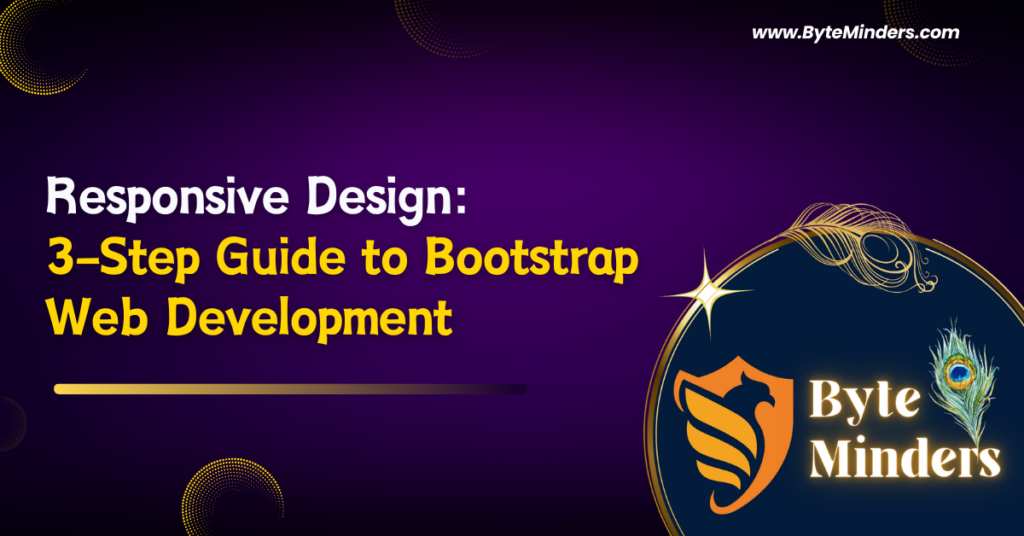
Top 12 Web Design Trends You’ll See in 2025
Introduction Web design is evolving rapidly, and as we enter 2025, we can expect exciting innovations that will shape the way websites look and function. The latest Web Design Trends focus on user experience, aesthetics, and technology integration. Whether you are a business owner, developer, or designer, staying ahead of these Web Design Trends will help you create better websites that engage users and drive results. In this post, we will explore the top 12 Web Design Trends that will dominate in 2025. 1. AI-Powered Design Tools Artificial Intelligence (AI) is transforming web design. AI-driven tools help automate layout designs, suggest color schemes, and generate code, making website creation faster and more efficient. These tools improve user experience by personalizing content based on visitor behavior. AI will be one of the Web Design Trends that reshape website development in 2025. As AI continues to evolve, we will see it assist in content creation, automate customer interactions, and enhance accessibility features on websites. AI chatbots, predictive search, and dynamic content delivery will further revolutionize user experiences. Businesses that integrate AI-powered tools into their design process will save time and improve user engagement. AI will help in automatic content updates, personalized recommendations, and data-driven decision-making. Websites will use AI to analyze visitor behavior and adjust elements in real-time, ensuring an optimized experience for every user. 2. Dark Mode and Low-Light UX Dark mode continues to gain popularity because it reduces eye strain and enhances battery life for mobile users. More websites are adopting dark themes with high-contrast elements for a sleek and modern look. This Web Design Trend also aligns with accessibility and usability improvements. Many brands are now offering both light and dark mode options, allowing users to switch based on their preferences. This flexibility enhances user satisfaction and improves retention rates. As more users prefer dark themes, websites will need to ensure seamless transitions between light and dark interfaces. Beyond aesthetics, dark mode contributes to energy efficiency, especially for OLED screens, which consume less power when displaying dark colors. Developers will focus on optimizing dark mode interfaces to maintain readability and contrast while ensuring that branding elements remain consistent across both light and dark versions. 3. Minimalistic and Clean Design Simplicity is key in modern web design. In 2025, websites will focus on minimalist layouts with plenty of white space, clear typography, and well-structured content. This approach makes it easier for users to navigate and find information quickly. As one of the growing Web Design Trends, minimalism enhances readability and user experience. Additionally, minimalist designs often load faster, reducing bounce rates and improving SEO rankings. Websites that declutter their interfaces and focus on essential content will likely retain more visitors and enhance engagement levels. Minimalist design is not just about fewer elements; it’s about intentional simplicity. Removing distractions and focusing on core content helps guide users toward important actions. Brands will experiment with minimalist storytelling, where fewer visuals and words create a stronger emotional impact. 4. 3D and Immersive Elements With advancements in web graphics, 3D elements are becoming more common. Interactive 3D models, animations, and immersive visuals create a more engaging experience for users. This trend is particularly useful for e-commerce websites and product showcases. Expect Web Design Trends to feature more 3D elements in 2025. These elements can be further enhanced with augmented reality, allowing users to interact with products in a more meaningful way. Virtual showrooms, 3D storytelling, and gamification will make websites feel more engaging and futuristic. 3D elements enhance brand storytelling by providing interactive experiences that captivate users. Websites with 3D content will incorporate WebGL technology for smoother interactions. As internet speeds improve and device capabilities increase, we will see even more websites integrating 3D elements without compromising performance. 5. Neumorphism (Soft UI) Neumorphism combines skeuomorphism and flat design to create a soft, realistic interface. Buttons and elements appear slightly raised or embedded, giving a unique depth effect. This modern aesthetic enhances usability while maintaining a visually appealing design. As part of the latest Web Design Trends, neumorphism brings a fresh look to user interfaces. It is particularly effective in dashboard interfaces, finance applications, and productivity tools. Expect neumorphism to evolve with subtle animations and layered effects, making interactions even more intuitive. 6. Advanced Microinteractions Microinteractions are subtle animations that provide feedback to users. From button hover effects to animated loading indicators, these small details enhance the overall user experience. In 2025, microinteractions will become more dynamic, making websites feel more interactive and responsive. This is one of the Web Design Trends improving website engagement. Microinteractions can also help guide users through a website, making navigation more intuitive and enjoyable. Expect more AI-driven microinteractions that anticipate user needs and provide real-time assistance. 7. Voice User Interface (VUI) Integration With the rise of smart assistants like Alexa and Google Assistant, voice search and voice navigation are becoming more popular. Websites will integrate voice commands, allowing users to browse hands-free and improve accessibility for differently-abled individuals. The adoption of voice UI is among the Web Design Trends that will change how users interact with websites. Companies investing in voice search optimization will likely gain a competitive edge in organic search rankings. Conversational AI will further enhance voice interfaces, making digital interactions smoother and more natural. 8. Augmented Reality (AR) Experiences Augmented Reality is no longer just for gaming; it is now being used in web design to create immersive shopping experiences. E-commerce websites, in particular, are adopting AR to allow users to visualize products before making a purchase. AR-enhanced interfaces will be one of the most exciting Web Design Trends in 2025. The fashion and furniture industries are leading this trend, offering customers a virtual try-before-you-buy experience. AR combined with AI will personalize shopping experiences and improve conversion rates. 9. Scroll-Based Animations and Effects Scrolling effects, such as parallax scrolling and dynamic content loading, will be a major Web Design Trend in 2025. These effects make web pages more engaging and encourage users to scroll further,









